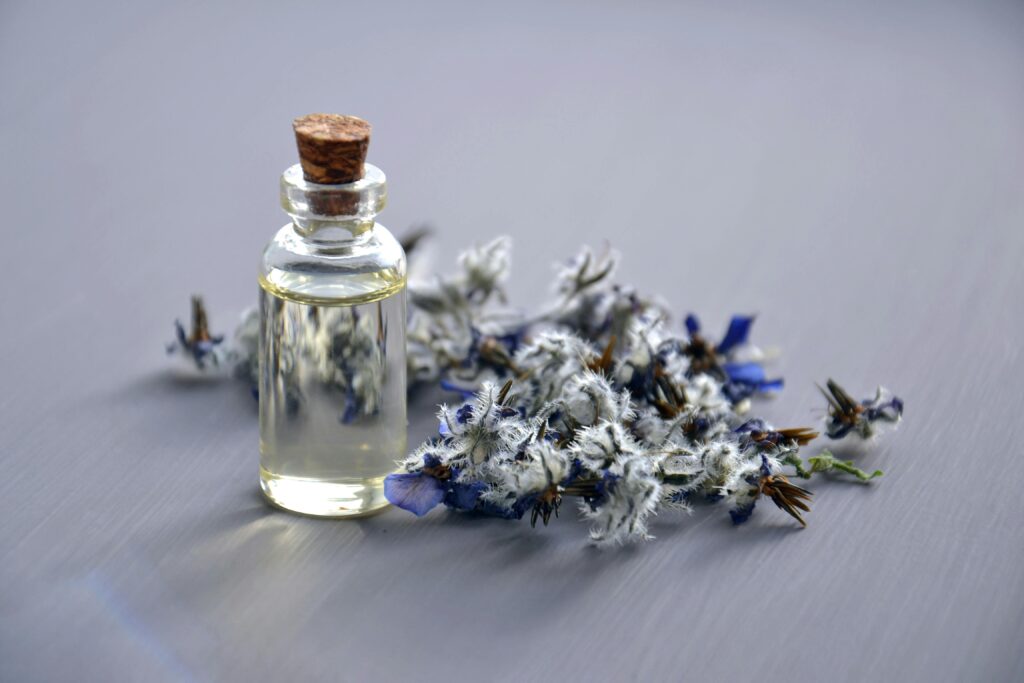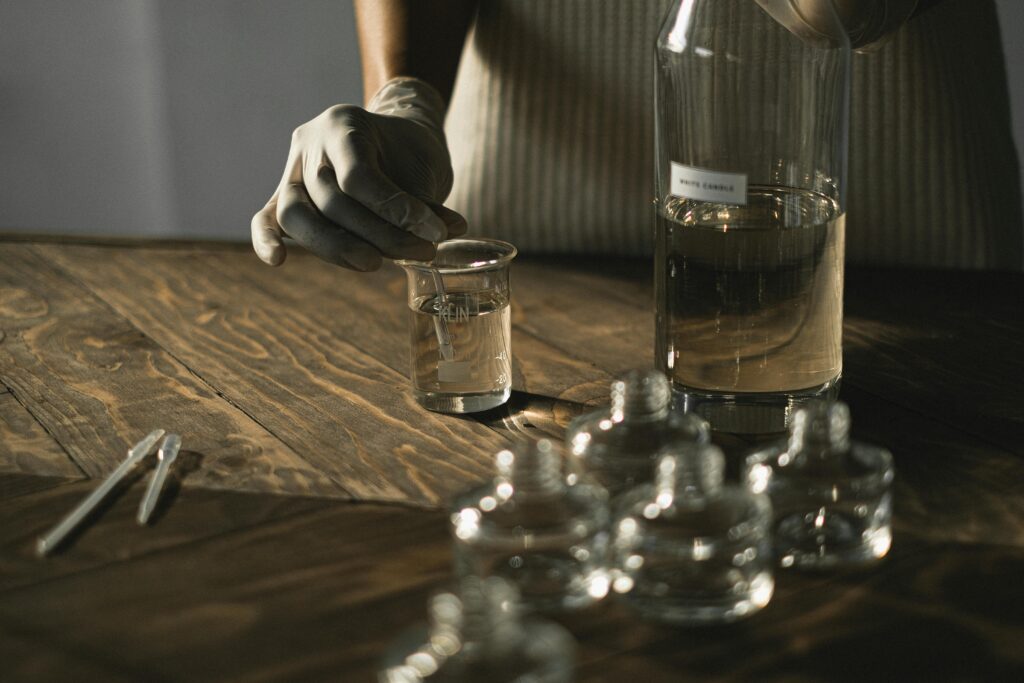Fragrance layering, sometimes referred to as smell layering or fragrance cocktailing, is a luxurious and customized method of improving your fragrance experience. Rather than depending on a single perfume, this method combines two or more scents to produce a personalized scent that is all yours. Perfume layering, when done correctly, can take your fragrance game to the next level and make an impression wherever you go. We’ll delve deeply into the art of perfume layering in this book, covering everything from understanding scent families and notes to layering strategies, advice, common blunders to avoid, and some tried-and-true mixtures for beginners.

Perfume layering
The process of applying many fragrance products—either distinct perfumes or scented body products—to produce a personalized scent is known as perfume layering. Layering is a technique used by some to extend the wear of their perfume, while others use it to customize their scent to fit their event, mood, or time of year. Layering perfumes, as opposed to wearing just one, allows you to. Make a fragrance that nobody else is wearing. Manage the strength and duration of your scent. Adjust your fragrance to fit various settings or emotions. Make the most of your selection of fragrances. However, some understanding of fragrance composition is necessary to compare smells properly.
Recognizing the Structure and Notes of Perfumes
Each perfume is constructed using a three-tiered framework. These are the first impressions; they are brief, light, and new. They often last five to fifteen minutes. Citrus, mint, and light fruits are typical examples. After the top notes fade, the middle (heart) notes come into play. They make up the perfume’s base and are richer. Green, spicy, or flowery scents are a few examples. The sounds that endure the longest, known as base notes, add depth and richness. Consider leather, Amber, vanilla, musks, or woods. It’s crucial to take into account the interactions between these notes when layering. A strong base note may overpower sensitive top notes in one fragrance but not in another.
Why Use Layers of Fragrances
The following are some advantages of layering perfumes.
Customization
You can design a distinctive fragrance that no one else wears.
Longevity
Some scents that have a lot of base can make others linger longer.
Seasonal Flexibility
You can lighten winter scents for summer or the other way around. Imagination enables you to convey your personality, style, or emotion distinctively.
The Complete Guide to Fragrance Layering
In order to maximize the benefits of perfume layering, adhere to these essential rules.
Go Light First
Then, start with lesser scents and work your way up to heavier ones. This helps the fragrances develop in harmony by recreating the top, middle, and base of a perfume.
Remain in the same family of fragrances (at first)
Use similar smell families when you’re just starting to layer citrus with citrus, floral with floral, and oriental with oriental. For artistic effects, combine different kinds once you feel comfortable doing so.
Don’t go over two or three levels.
The nose can become confused by too many layers. Typically, two scents are enough, and no more than three. If you do more than that, your scent can get confused. In advance of doing, test before applying your red combination all over; always test it on your wrist. Some seemingly wonderful combinations may react chemically with your skin or with one another.
Use a Strategic Approach
Apply each perfume to a different pulse point, such as the neck or wrists, or layer one on clothing and another on the skin, rather than spritzing one on top of the other—detailed Instructions for Layering Fragrances Step.

Get a Clean Stone First
To get rid of any leftover lotions or scents, wash your skin or take a shower. Clean, hydrated skin is the ideal condition for fragrance layering.
Apply Hydration to Your Skin
Use a moisturizer that is either lightly perfumed or odourless. This step increases scent persistence since oily skin retains perfume longer.
Apply a base scent in step three.
Start with a base-heavy scent, usually something creamy, smoky, or woody. The smell will be anchored and given enduring force as a result.
Apply a Softer Fragrance
Layer Top with your more effervescent, lighter scent. This could have a bright, fruity, or floral flavour. Here, you can also apply scented lotion or body mist.
Adjust the balance
To adjust how strongly the quantity of sprays changes. For example, use two spritzes of a softer rose and one spray of an intense oud.

Allow It to Calm Down
Before determining whether you like the outcome, let the scent sit for a few minutes to settle. Take a stroll and let the fragrance emerge organically.
Families of Fragrances
That Layer Well, Certain fragrance families are naturally more beneficial to one another than others. The following combinations typically work: The Fragrance Family Makes Excellent Layering Partners Fruity, floral, musk, vanilla, and woody Woody Leather, spice, Amber, flowers, and gourmet Asian Patchouli, vanilla, Amber, musk, and flowers Fresh/Citrus Fruity, floral, herbal, and aquatic Gourmand Fruity, flowery, caramel, and vanilla.
Top Layering Combinations (Suitable for Novices)
Rose and Vanilla Soft, romantic, and attractive to all. Rose provides grace and freshness, while vanilla offers softness. Musk and Citrus are Great for the summer. While the musk lends length and sensuality, the citrus includes brightness.
Jasmine and Rose
Allowing and deep. Jasmine creates a lush floral heart, while black adds interest. Fruity + Woody. Perfect for a contemporary, well-balanced fragrance. Imagine sandalwood combined with fig or peach. Vanilla + Patchouli is brave and comforting. Vanilla balances it out, while Patchouli provides minerals—common Errors to Steer Clear of Overpowering.
Strong Fragrances
Avoid wearing two perfumes that are too strong together. A strong aroma should always be counterbalanced with a gentler one.
Fulfilling Families
Unless you are an expert, stay away from combining spicy or decadent fragrances with green or herbal ones.
Mixing Too Many Layers
Limit your perfumes to two or three. Beyond that, chaos ensues.
Applying Without Testing
Before applying, always test a minor change.
Using Different Notes
Steer clear of overusing controlling notes, such as oud, leather, and smoke.
Use Scented Body Products
Apply scented oils, lotions, or body washes in layers that go well with or enhance your perfume.
Add Layers of Clothes and Skin
While certain scents work better on fabric, some are more effective on skin. Give the top smell a try on your skin and the base of your clothing.
Adapt to the Seasons
Use lighter options in the summer (citrus, florals, aquatics) and heavier ones in the winter (oud trees, yellow, leather). Find a combination that produces your signature scent by experimenting. Depending on the Occasion, the layer is fresh and flowery during the day and spicy and woody.

Men’s Layering of Fragrances
Men are also able to layer. Among the manly pairings are Citrus + Leather (Fresh but sophisticated), Spice + Vetiver (bold and earthy), Woody + Aquatic (clean and masculine), Tobacco + Amber (sultry and dark).
Concluding remarks
Layering perfumes is an effective way to use fragrance to convey uniqueness and creativity. It enables you to create a perfume that really appeals to you and to break traditional fragrance conventions. The effects may be excellent, turning your daily fragrance practice into a highly personal ritual, even though it takes some trial and error. Keep in mind that the secret is to start small, try different combinations, and have faith in your gut feelings. You’ll not only smell amazing with time, but you’ll also become more confident in your smell identity.